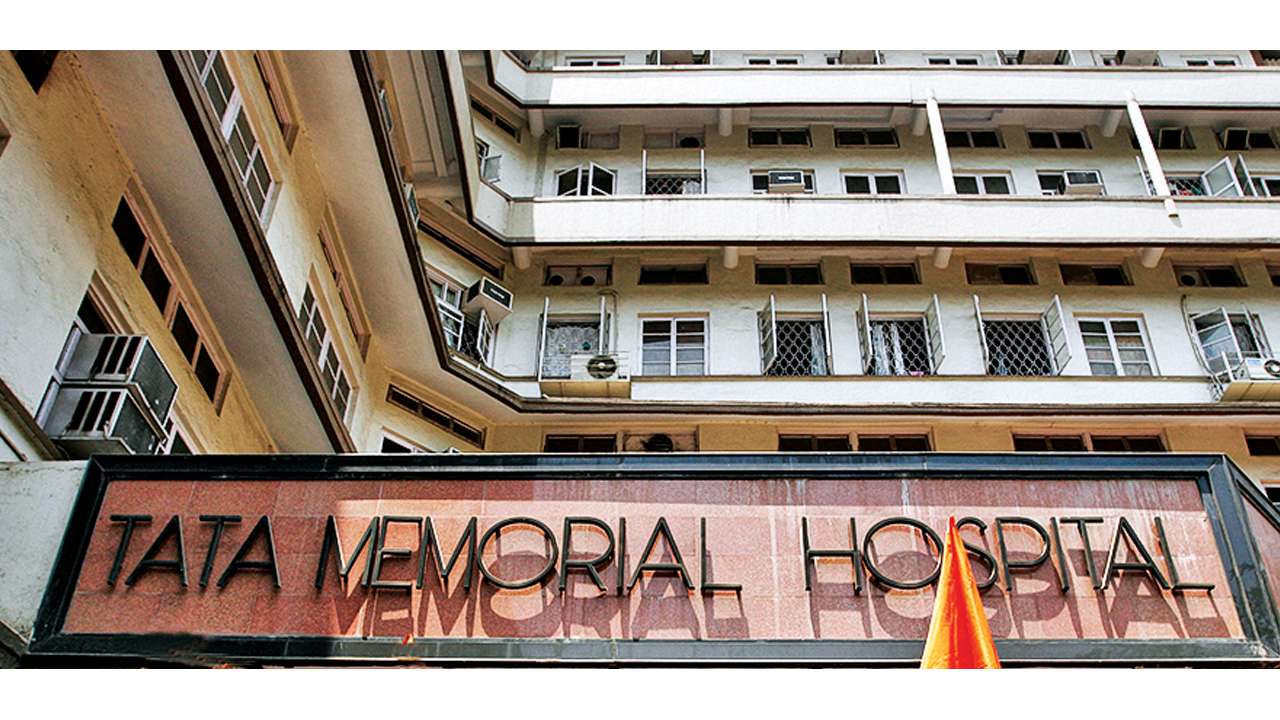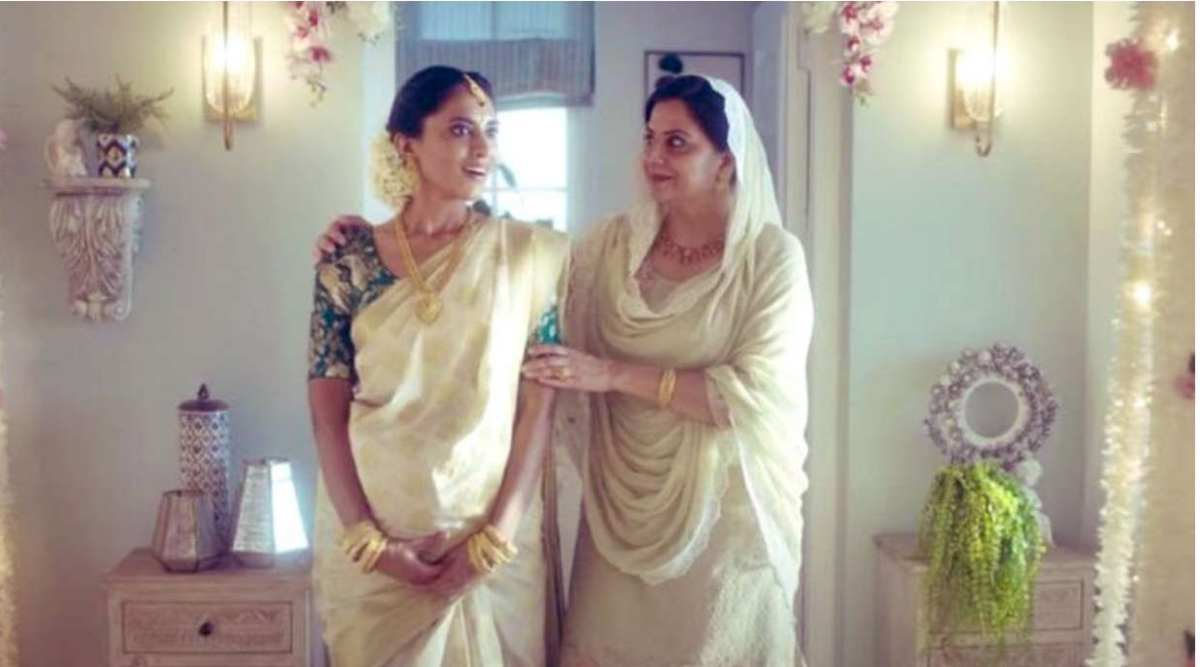|
It was yet another Sunday coming up, and that meant another Sunday morning ride and another exploration of Mumbai by cycle.
I had been intrigued by a blog I had read about an ancient Shiva carving in a temple in Parel - a 5th century Gupta period carving, very like those found in the Elephanta caves. I was very intrigued indeed! Parel always indicated suburban Marathi blandness to me, and I had never associated that middle-of-the-road suburb with anything historical. I had to check this out!
I set out early morning and had a nice peaceful ride on the main road - I only dare to take this road and flyovers on early Sunday mornings… else there is a very real risk of being knocked down by fast-moving traffic. But if the roads are empty, then it is a real pleasure to take the main road and climb up the flyovers to get the muscly rush, and zoom down them to get the speed rush! WOOHOO! What fun! Double endorphins!
When I entered Parel, it suddenly struck me how much of a medical mecca this place is! There are four large hospitals here - and many many small ones, diagnostics centres, medical shop, accommodation of patients and relatives, charitable organisations offering food, accommodation and other support to poor people, people living on the streets… I had never really paid attention to these places before, but this time since I was alone on my cycle, I could stop and take a few photos and notice the place. I was quite struck by the magnificence of the Bai Jerbai Wadia hospital - the Indo-Saracenic architecture of the building was quite impressive. And it should be - as it was designed by George Wittet, the same dude who designed the Gateway of India and a lot of Ballard estate! There was a relief or stele of the eponymous Bai Jerbai on the arch - and this is a lady who really deserves to be better known!
Jerbai was born in 1872 and had a nice conservative traditional upbringing, and married into a very rich Parsi family. But she was a wonderful combination of earnest good nature and wanting to make a positive contribution to society + the determination and guts and orneriness to make things happen! This is a most unusual combination and is god’s gift to humans.
Jerbai was married into one of India’s most remarkable families - the Wadias. The Wadia family has three main branches: textiles, shipping, and jewellery. Descendants from each of these branches have made significant contributions to their fields, to their communities, to India, and to the global economy; they have been industrialists, government leaders, medical doctors, and scholars. The Wadias were shipwrights from Surat, and Lovji Wadia came to Bombay in 1736 at the invitation of the British, and built the city’s first dry docks and became a most prominent family here. They built over a hundred warships for Britain, and had trading networks around the world - and as a matter of interest, the American national anthem ‘The star-spangled banner’ was written by Francis Scott Key aboard a Wadia-built ship - the HMS Minden. (He was probably a prisoner in that ship - but hey...a Wadia built ship) Jerbai’s husband - Naoroji Wadia - died in 1907 - leaving her a very rich widow… he left her Rs 9 lakhs in his will - a staggering amount in 1907. This must have been quite an unusual thing in the conservative atmosphere of the time to leave so much wealth in the hands of a woman - which also shows how much regard her husband had for her. She decided to dedicate her life to good works and use her money and dynamism for the same. Housing was a big problem at the time, so she created a set of low cost tenement blocks for the use of poor Parsi families. This was such a success that she went on creating more and more of them - the first colony was called Naoroj baug in memory of her husband. Her younger son Rustom died in 1923 and left her a staggering 3 crore rupees in her will - and she used that to build another block of houses, which was called Rustom baug in her son’s memory. She started building another huge block of housing - but she died in 1926 before it could be completed, and it was named Jer Baug in her honour. Her sons also continued her charitable legacy and developed more housing estates which were called Cusrow baug and Ness baug. Thus you can see how much one single lady’s zeal has contributed to the well-being of the entire Parsi community of Mumbai. Random unrelated but interesting aside - the Wadia family is related to the founder of Pakistan - through Neville Wadia, who was married to Dina Jinnah from 1938 to 1943, and had two children together, Diana and Nusli Wadia. Dina was the daughter of Muhammad Ali Jinnah and Rattanbai Petit. Jinnah was obviously the founder of Pakistan and the father of the ‘Partition’ which cost god knows how many lives and lives on as a festering wound in the soul of the subcontinent. Such differing people in the same family :) 
Apart from this, the Wadia family endowed the famous ‘Wadia college’ in Pune - which is one of the leading liberal arts colleges of India. She also - obviously - endowed this grand hospital i was looking at, and this was only one among many other charitable endowments she did - which includes a hostel for nurses at JJ hospital, a number of nursing and convalescent homes at Khandala, Mahabaleshwar, Deolali etc, extension of hospital wings and wards etc. It is estimated that her total charitable contributions to Mumbai was over 8 crores! 8 crores in 1926! A staggering amount of generosity indeed!
And this is not the only amazing example of Parsi charity here - you only have to look across the street to the Tata memorial hospital.
Before there was the hospital - there was the world’s largest diamond! Well… the world’s 6th largest diamond actually - the 245 carat whopper found in the Jagersfonten mine in South Africa. It was supposed to be presented to Queen Victoria on her jubilee, and hence was called the ‘Jubilee diamond’ - but they never got around to gifting it to her for some reason. The super-rich moneybags Dorabjee Tata bought the diamond in 1900 as a gift for his wife Meherbai. The turn of the century was boom time for the Tatas, as they were expanding like mad - they started the Taj Mahal hotel in 1903, TISCO in 1907 and Tata power in 1910 - and a number of other ventures. Dorab and Meher Tata lived like royalty in a big mansion in Esplanade and amassed a huge art collection and whatnot. But the 1920s brought a lot of pressures with cheap Japanese steel flooding the market and TISCO was on the verge of collapse and needed a huge cash injection of Rs 2 crore - a most stupendous sum at the time! It was the Jubilee diamond which came to their rescue - Sir Dorabji pledged the diamond to the Imperial bank of India (which was renamed later to SBI) and got a loan to tide over the problems. Lady Meherbai was also a most remarkable lady - she was a member of the ‘Bombay presidency womens council’ and the ‘National council for women’ and was a key member in the act to ban child marriage. She was created a CBE (Commander of the British Empire - a great honour) by King George. And she was also the aunt of two very famous nephews! Homi Bhabha, the father of Indian atomic energy, and Jamshet Bhabha, the founder of the NCPA (National Centre of Performing Arts) She loved the Jubilee diamond and wore it a lot - and when she died of Leukamia in 1931, Dorabji Tata left his entire wealth - including the fabulous Jubilee diamond - to the Dorabji Tata Charitable trust - which sold the diamond to fund the building of the Tata Memorial Hospital. Imagine the large-heartedness of the man who gave away all his wealth for the betterment of the poor cancer patients. Truly - 'Humata, Hukhta, Hvarshta’ - ‘Good Thoughts, Good Words, Good Deeds.’
Apart from Parsi benevolence, we also have Hindu benevolence in the form of the Seth Gordhandas Sunderdas medical college, lovingly known as the GS medical college. It was built as a mark of protest by Indian doctors not allowed to serve at Bombay’s then only medical school, Grant Medical College. Funded by the heirs of Seth Gordhandas Sunderdas, a wealthy Bombay merchant, the hospital employed only Indian doctors and professors. But then they named the hospital after the king of the oppressors, and called it the King Edward Memorial hospital! Talk about keeping one foot on each plank!
So now the institution is called the ‘King Edward (VII) Memorial Hospital and Seth Gordhandas Sunderdas Medical College’, and is a leading medical institution of the country with several firsts to its name - take any medical procedure at random and there is a high chance that it was pioneered here!
We have Christian benevolence in the form of Dr Ernest Borges - Dr. Borges, a Goanese doctor working with Tata hospital, had helped the poor outpatients staying on the pavements for many years till constant exposure to radiation while treating his patients eventually claimed his own life. The road outside is named the ‘Dr Borges road’ in his honour.
And we have state benevolence - in the shape of the Haffkine institute! A hundred odd years ago the building was the Governor’s Palace, Sans Pareil, and its extensive grounds. The edifice started off as a Jesuit chapel (1673), then became the Bombay Governor’s residence (1771 – 1885), then offices of the Bombay Presidency Recorders, and finally the Plague Research Laboratory in 1899, later renamed Haffkine Institute in 1925.
So who exactly was Haffkine and what was his story in Bombay? Dr. Waldemar Mordecai Haffkine was a Russian Orthodox Jewish scientist invited to India to develop a vaccine against the bubonic plague then thwarting the city. Haffkine worked persistently, despite all odds, from a makeshift laboratory in a corridor of Grant Medical College for three months, and on 10 January, 1897 tested his vaccine on himself. Bombay owes its escape and recovery from the plague to this gentleman.
I did this cycle ride back in 2016 - and it really resonated with me then, because my mom was suffering from cancer at the time, and the disease took her life the next year. That hospital, those patients, those poor guys on the sidewalks, the medical feel of the place .. I could identify with all of them.
And I am writing this blog in 2020, and it is resonating with me again as COVID stalks our lives as Plague did their lives at the turn of the century. We are waiting for another Dr Haffkine to turn up and do his thing.
(and sometimes when social media seems to tell us nothing but stories of bigotry and hate and inter-religious bile and howling madness… one might find it soothing to come here and see the good work done by good people from many different religions and backgrounds. We should talk more about nice things on social media.
Remember - 'Humata, Hukhta, Hvarshta’ - ‘Good Thoughts, Good Words, Good Deeds.’) This blog has become pretty long - so I will talk about what I came to Parel to see - the ancient Shiva stele- in the next blog :) |
Categories
All
Hi thereI blog about my travels - and the thoughts they set off! Sometimes the simplest destinations can be the most thought-provoking! Archives
May 2022
|













 RSS Feed
RSS Feed

